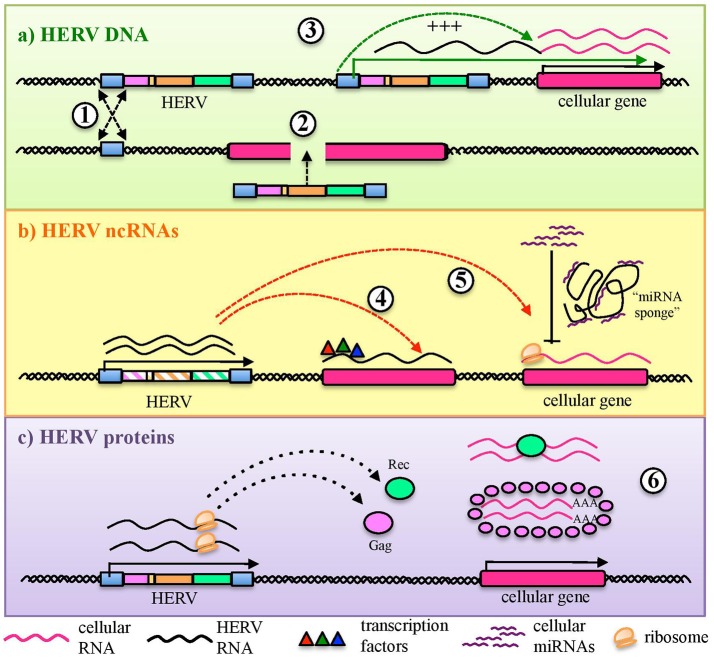Figure 2.
HERV role in the regulation and shaping of human gene expression. HERVs can influence the host gene expression at several levels. (a) Integrated DNA sequences can trigger chromosomal rearrangements by non-allelic homologous recombination (1) or disrupt co-localized genes through insertional mutagenesis (2). Moreover, HERV sequences integrated in proximity to a cellular gene can provide alternative promoters or enhance its expression through LTR cis-regulatory elements (3). (b) HERV non-coding RNAs (ncRNAs) can also be able to cis-regulate cellular genes, even through the recruitment of cellular regulators (e.g.: transcription and splicing factors) (4). In addition, HERV ncRNA have been reported to act as “microRNA sponges,” binding and dampening microRNA families responsible for post-transcriptional modifications (5). (c) Finally, some HERV proteins can also regulate genic expression through their interaction with cellular mRNAs and the modulation of their transfer and ribosome occupancy (6).

